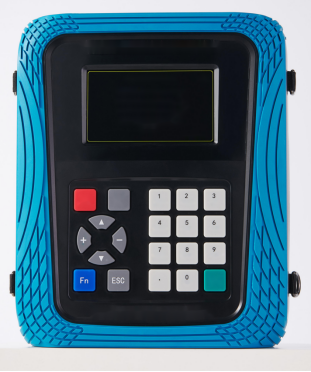
I. System Overview
The secondary defect elimination tester HZJB-1700 is controlled by single chip microcomputer, which is simple in function and convenient to carry. It can be used to test the action value and time of AC relay. It can also test the protection functions of the low voltage microcomputer line protection, such as re-pressurization blocking direction overcurrent, zero sequence overcurrent, low cycle load reduction, and the whole transmission of the high voltage microcomputer line protection. It can also be used to test the start value, quick break value and second harmonic inrush blocking value of differential protection of microcomputer transformer.
●Manual Test:The manual test can output three AC voltages and three AC currents, and the amplitude, phase, frequency and sequence component of the AC quantity can be controlled manually by step size.
●State Sequence Test:Status can be carried out action time test, multi-state simulation of failure, up to 5 states can be set, can be simulated after re-closing acceleration, can also be combined with the company's wechat analog circuit breaker for backup self-firing test.
●Low Cycle Load Shedding Test: The unit can perform fixed point test for low cycle load shedding action value, action time, slip lock value, voltage lock value, current lock value.
●Concurrent Test: The unit can test the relevant indicators of the test concurrent device
●Harmonic Unit: The unit can be used for the second harmonic inrush current blocking test of transformer differential protection.
●Cross Sampling Test: This unit is mainly used to measure the sampling accuracy of the AC sampling device.
●Remote Test: The unit can quickly open two pairs of nodes, the intermediate interval time can be freely set, the minimum resolution of 1ms.
●Millisecond Meter: The unit can cooperate with the scene to do some open quantity, flip timing.
The specific functions are described as follows:
Manual test functions | Can arbitrarily set the AC amount of various voltages, current amplitude, phase, and set various fault types of parameters |
Test the electrical performance of relays and protection with AC voltage (including phase voltage, line voltage, zero sequence voltage, positive sequence voltage, negative sequence voltage), AC current (including phase current, line current,) amplitude, phase, frequency, impedance and other variables. | |
The step size can be manually controlled, and the step size can be changed by any setting variable | |
Changes in output can be controlled | |
Monitor changes in the input volume | |
Action time can be tested | |
Multiple continuous state tests | Provides a variety of state sequence settings |
Provide a variety of time control, input control, manual trigger for state switching | |
Can set various types of faults, including single grounding, two-grounding, interphase short circuit, three-phase short circuit. Fault type Instantaneous fault, permanent fault, transformational fault, and can control the fault transition time | |
Can provide constant current, constant impedance and other test methods | |
It can simulate the opening and closing time of the short-circuit device | |
Can provide a separate voltage output as zero sequence voltage or line extraction voltage As zero sequence voltage can be set to ±3U0 or ±3√3U0; The amplitude and phase of the voltage can be set at will when the line extraction voltage is tested | |
Can check the opening, opening and logical relationship of the action behavior of relays, protection and safety automatic devices | |
The amplitude and phase of voltage and current can be set arbitrarily | |
Can set the status parameters of various faults | |
Can control each switching quantity separately | |
Dedicated test function | Low cycle load shedding |
Concurrent test | |
Harmonic test | |
AC sampling test | |
Millisecond timing function | |
Remote test |

HZJB-1700 Product Photo
Keys description:
Run/Stop: Start test/stop test
Back delete key: When the cursor is in the current or voltage position, press the back delete key to move the cursor left or right.
▲▼:Move the cursor to change settings
+-:Matching variables set increasing or decreasing values.
Fn:Special function key, click to change the variable selection.
Fn+1:Adjust the opening volume node 1 to carry out the action of close and disconnect.
Fn+2:Adjust the opening volume node 2 to carry out the action of close and disconnect.
3:Key trigger function in status sequence
Fn+4:Initial value
Fn+5:Short circuit calculation (This function is only available on HZJB-1700) Fn+6:Setting key
Fn+7:Quick constant amplitude shortcut button
Fn+8 Fn+9:Quickly set Angle positive and negative order.
ESC:Exit the experiment menu to the main menu.
“.”:Enter ". "when the cursor is on the amplitude. When the cursor is in phase, the output is“-”.